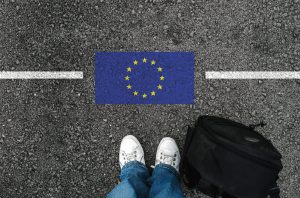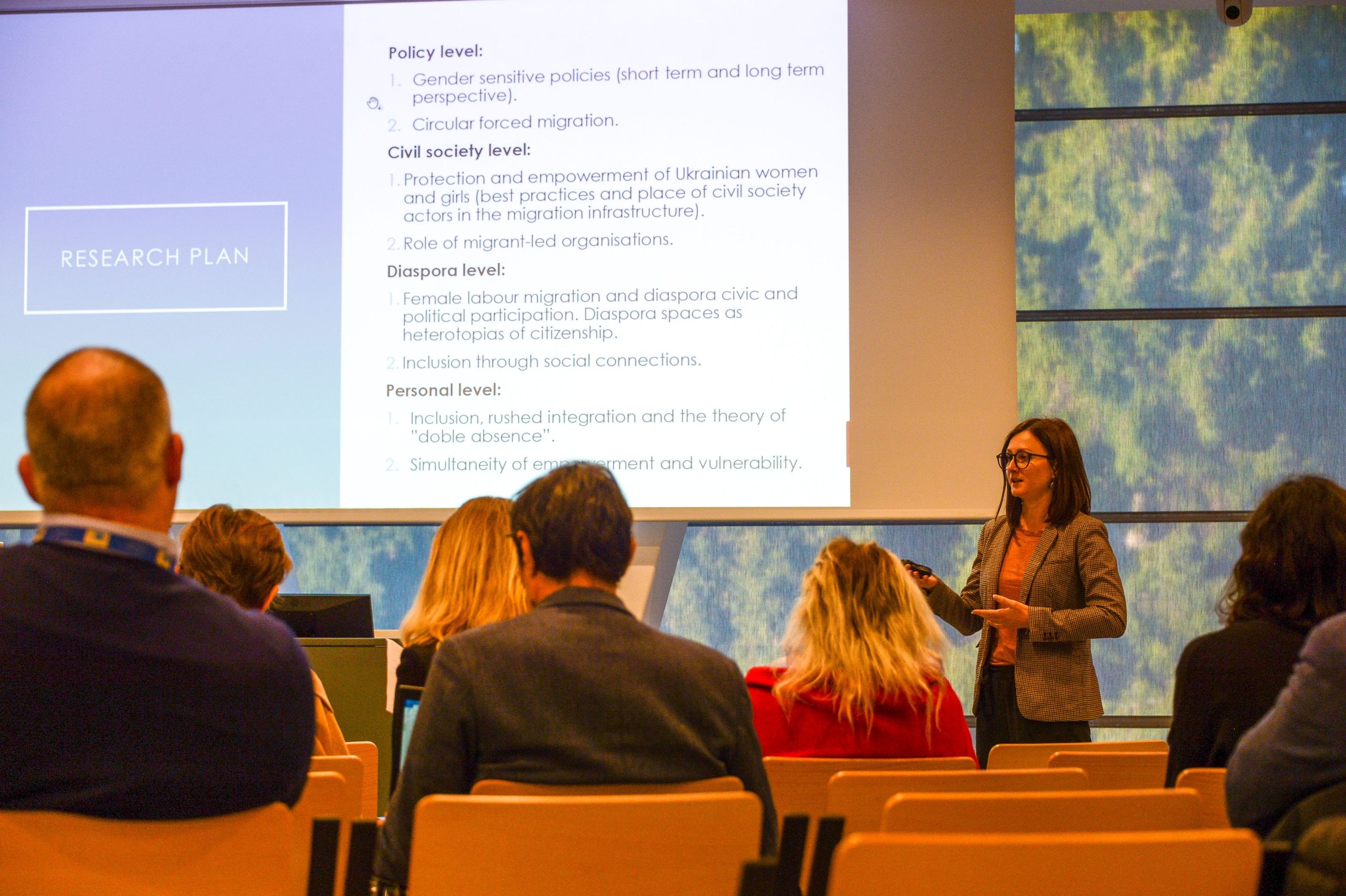
Read more
Blog, Migration Governance
What happens next? Scenarios following the end of the temporary protection in the EU
To respond to the large-scale displacement of Ukrainians fleeing the Russian invasion, the EU unanimously adopted the Council Implementing Decision 2022/382 of 4 March 2022 and activated the Council Directive 2001/55/EC, (Temporary Protection Directive- TPD)....
“Have you ever written a statement of motivation for a job application in a bomb shelter?” – asked a colleague of mine from Kyiv, who is now hosted by Free University of Berlin. These are just some of the questions we, Ukrainian scholars fleeing the war, have found ourselves asking over the past year.
At the end of 2022, 2619 educational institutions in Ukraine had been damaged by bombing and shelling and another 406 have been completely destroyed. Among these are 95 research and higher education institutions—91 of which are partially damaged and four have been completely destroyed. We must remember as well about 11 institutions that are located in occupied areas with no reported data.
But it’s not only buildings that were damaged, the Ukrainian academia has also been damaged: many scholars are gone, and some of them have been killed. It takes a serious time and institutional investment to produce a higher education community. It cannot easily replaced and will depend on people returning. How many of those who fled the war in Ukraine will be back? How we rebuild our intellectual environment that has been heavily affected by war?
A war, not a conflict
The war in Ukraine, which began in 2014, has resulted in a significant displacement of people from the territories occupied by Russia. These have included young and the old, women and men, IT workers and bankers, doctors and artists, and yes, also researchers and scientists. By 2019, more than 1600 scientists and scholars had left the country, according to a report conducted by the Ukrainian Ministry of Education.
This number has only increased since then, especially after the full-scale invasion beginning in 2022. A recent report focusing exclusively on the displacement of Ukrainian researchers and scientists shows that more than a half of all Ukrainian scholars have changed their residence in the first months of full-scale war:
- Around 38% of them stayed in Ukraine, but moved to relatively safer places
- Almost 15% moved abroad, with the vast majority to Germany (almost 27%) and Poland (around 25%).
- Among those 39% that stayed at their places of living, 7% kept living in areas of hostilities.
The daily task for everyone, but especially the latter has been survival rather than scientific work.
The situation in Ukraine remains complex and is rapidly changing. Currently, one year after the beginning of the full-scale war, the number of those who stayed abroad has decreased, but stands at 12%. While Ukrainian scholars are returning to Ukraine for different reasons, the main problem remains: no one can guarantee them a safe and accessible workplace even in regions considered to be relatively ‘safe.’ The number of researchers leaving or returning to the country in the future may depend on various factors such as their individual circumstances, the security situation in the region, the availability of academic and research opportunities in other countries, and, finally, the attitudes of their home institutions in Ukraine.
Scholars Abroad
According to a recent report, the majority (almost 62%) of Ukrainian scholars abroad are women in their 30s and 40s. Struggles with psychological well-being ranked high on the list of obstacles reported by scholars,. Refugee scholars experience continuous existential precariousness; they live with their own undefined legal and professional statuses while also actively monitor the situation in Ukraine, where many of their loved ones have been left behind.
Many scholars mentioned lack of energy or faith in the future, general uncertainty, and inability to plan. They want to return to their intellectual pursuits as fast as possible; they want to keep working, but while trying to find a job, they are also trying to gain some stability or level of permanence, which does not seem possible at the moment.
(Too?) emotional conclusion
New research on effective communication practices suggest that in talking about migration we should use both emotion and facts. But what emotions are we, Ukrainian scholars abroad, expected to connect to in order to communicate our research on Ukrainian migration? The task is not simple. Apparently, it should be emotional, but not too much, not too sad, but not too happy either, persuasive, but not aggressive, evidence-based, but politically correct and inclusive. Academia is an extremely competitive field of work. One must keep pushing themselves to achieve visibility in their research community and to ensure the excellence of their ideas. It is little wonder perhaps that psychological well-being is a chronic issue even amongst academics who have never experienced the horrors of war or precarity of forced migration.
In this ‘marketplace of ideas’ where scholars are often reduced to numbers and statistics when applying for jobs and grants, will the 2022 forced sabbatical of Ukrainian academics be taken into consideration? What does the CV of a Ukrainian researcher look like? Once we are no longer ‘researchers are risk’, will the number of articles we published be weighed against the number of missiles we escaped from? Can ‘surviving’ be listed in the professional qualifications section of a resume?
To be a Ukrainian scholar fleeing the war is to carry a heavy burden of guilt, a responsibility to rebuild Ukrainian academia, and an anxiety for the future. It means to work both in spite of and because of our grief. It means to reduce our families, neighbors, and friends to quantitative data. It means to be an object of our own research.

